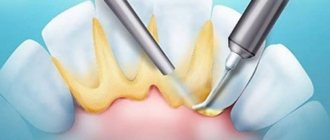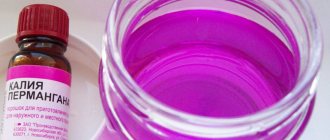What is stomatitis?
Stomatitis is an inflammation of the oral mucosa. According to statistics, about 20% of the population of our planet faces it. In adults and children, it can take the form of an independent disease or act as a symptom indicating pathologies of the body. In both cases, treatment is carried out comprehensively and under the supervision of a doctor.
What does the disease look like?
Stomatitis is not difficult to recognize. The initial stage of the disease is characterized by the appearance of mild swelling of the oral mucosa. It becomes redder, drier and shiny. A plaque may appear on its surface, and at the site of future lesions the patient feels an unpleasant itching or burning sensation.
As the disease develops, small ulcers and wounds appear on the mucous membrane - painful oval or round lesions. Their location may be the inside of the lips, cheeks, palate, tonsils, or mucous membrane under the tongue. Their appearance can be seen in the photo at the end of our article.
Causes of stomatitis
The mechanism of stomatitis is not yet fully understood. But scientists are inclined to believe that the root cause of its development is the reaction of the human immune system to various irritants. At some point, the immune system ceases to recognize the potential threat of internal and external factors, which causes its atypical reaction, as a result of which “aggressive behavior” of lymphocytes is observed. The attack of lymphocytes against irritant molecules leads to lesions of the oral mucosa.
A variety of factors can provoke an atypical reaction of the immune system. The most likely of them are the following irritants:
- Pathogenic microorganisms that live in the mouth.
- Improper oral hygiene.
- Various damage to the mucous membrane, for example, burns from eating too hot food or mechanical injuries from seeds, nuts, crackers and other hard foods.
- General dehydration due to high fever, blood loss, vomiting, diarrhea, or thirst.
- Poor quality treatment of teeth and gums.
- An allergic reaction to dental structures in the mouth - braces, implants, crowns, bridges, etc.
- Long-term use of medications.
- A diet depleted of beneficial vitamins and elements.
- Smoking.
- Malignant formations of the oral cavity, respiratory organs or undergoing a course of chemotherapy.
- Hormonal imbalances in the body, for example in pregnant women or children during puberty.
- The presence of chronic diseases or allergies.
- Severe stress.
Interesting to know! Frequent stomatitis in adults can be caused by the use of toothpaste containing sodium lauryl sulfate, a substance added to oral care products to form a thick foam. According to recent studies, it dehydrates the oral mucosa and makes it vulnerable to various types of irritants. Patient observation data confirms the fact that avoiding the use of sodium lauryl sulfate paste can reduce the risk of developing stomatitis in adults by 81%.
Treating stomatitis with home remedies
| Facilities | Description |
| Hydrogen peroxide | Rinsing with a solution of hydrogen peroxide helps reduce discomfort and has an antiseptic effect. |
| Baking soda | Treatment of stomatitis in adults with soda is recommended when the disease is detected in the initial stages. A solution of the substance (a spoon in a glass of water) is recommended for rinsing. |
| Decoctions of chamomile, rose hips and calendula | They have disinfecting properties and contain vitamins and nutrients to maintain oral health. |
Symptoms of the disease
Stomatitis can occur at any age. In the early stages, its course is accompanied by swelling, redness and dryness of the oral mucosa. The main sign of the disease is the presence of one or multiple ulcers and their appearance.
- Oval or round ulcer shape.
- Small sizes.
- Smooth edges.
- The presence of a thin grayish or white film in the central part of the ulcer.
- The ulcer is surrounded by a slightly reddish halo.
- The mucosal tissue around the lesion has a normal, healthy appearance.
The slight itching or burning sensation that the patient experienced at the beginning of the disease is replaced by pain. The ulcers hurt when eating, talking and smiling broadly. Any touch to them causes pain, which complicates hygiene measures and leads to bad breath.
On average, the disease lasts from 4 to 14 days. Its clinical picture depends on the individual characteristics of the organism, the form and type of the disease. During this period, in addition to the main signs of pathology, other symptoms of the disease may be observed.
- Increase in temperature - during the first days, until characteristic ulcers appear (in severe forms of stomatitis, the elevated temperature persists throughout the entire illness).
- General malaise and fatigue.
- Chills.
- Headache.
- Lack of appetite (especially in children).
- Enlarged lymph nodes (in rare cases).
Important to remember! Severe inflammation, toothache or high temperature for a long time indicate a severe form of stomatitis or the development of its complications. In this case, immediate medical attention is required, and if necessary, hospitalization of the patient is possible.
Signs and symptoms of stomatitis
The symptoms of acute stomatitis are very similar for different types of this disease, although there are differences that make it possible to more accurately diagnose the disease. The location of the rash does not always indicate the form or causes of the pathology. The symptoms of stomatitis on the tongue or in the throat are generally the same; much more important is the nature of the manifestations, the presence of rashes - small blisters or one large ulcer. The severity of the inflammatory process allows us to judge whether the disease is milder, catarrhal, or more severe. For example, the symptoms of catarrhal stomatitis include only:
- redness and swelling of the mucous membrane,
- soreness, sometimes bleeding gums,
- bad breath,
- increased (or, on the contrary, decreased salivation),
- Sometimes a white sticky coating appears.
But at the same time, there are no rashes or ulcers, the temperature rises very rarely and slightly, the lymph nodes are not enlarged. It would seem that this indicates the stability of the immune defense and an easy and quick cure, however, even this form of stomatitis needs treatment, otherwise, once neglected, it can become more severe, ulcers will appear, a bacterial infection will join, which will spread to neighboring organs, causing serious complications.
So, let us highlight the symptoms of the disease characteristic of stomatitis:
- redness and swelling of certain areas of the mucous membrane,
- blisters, blisters or sores (not always),
- pain, burning, itching in the affected areas, which intensifies when touched, eating, talking,
- bad breath,
- plaque (white or grayish-yellow) on the affected areas,
- fever, chills (not always, more often in children than in adults),
- signs of intoxication - weakness, headache, nausea (not always).
Symptoms of stomatitis in newborns are slightly different. Most often this is:
- temperature increase,
- baby's refusal to breastfeed,
- restlessness and moodiness of the baby,
- small blisters or sores on the oral mucosa.
The most common causes of stomatitis in newborns are the herpes simplex virus (65%) or the Candida fungus (30%). In the case of herpes, blisters with transparent contents appear on the mucous membrane, which soon burst, forming ulcers. With candidal stomatitis, white dots appear that merge to form a solid white coating. Since damage to the mucous membrane causes pain and burning, the baby refuses to eat, which is very dangerous, as it leads to weight loss and dehydration.
Temperature with stomatitis
The question of whether there can be a fever with stomatitis usually worries the parents of a sick child, who are trying to understand whether it is worth seeing a doctor. Yes, with stomatitis in children, the temperature very often rises. In general, the signs of stomatitis in children are usually more pronounced than in adults, due to the fact that the child’s immune system still reacts to infections and inflammation quite violently.
But even in adults with stomatitis, the temperature may rise, especially with a more severe course of the disease.
You need to know how long the temperature lasts for stomatitis. Usually this is several days, but depending on the cause of the disease and the severity of its course, this time may be shorter or longer. In any case, you should definitely consult a doctor - correct diagnosis and proper treatment can shorten this period and prevent the disease from developing into a complicated form.
Which doctor should I contact if I have signs of stomatitis?
Which doctor treats stomatitis? At the first signs of stomatitis, you should go to a doctor who treats diseases of the oral cavity - a dentist. He will determine the type of disease and its causes, prescribe treatment, and, if necessary, refer you for tests or to a specialized doctor to clarify the diagnosis.
If manifestations of stomatitis are noticeable in a child, then you should contact your local pediatrician.
Diagnosis of stomatitis
Successful healing requires correct diagnosis of stomatitis. Only a doctor with the necessary knowledge and professional experience can accurately determine the type of disease, establish the causes and propose treatment tactics taking into account the individual characteristics of a particular patient.
On the one hand, this disease has very characteristic symptoms and stomatitis is relatively easy to diagnose. On the other hand, stomatitis may be concomitant with another, more serious disease. The effectiveness of the medications and treatment methods used directly depends on the correct identification of the causes that caused stomatitis.
Treatment of stomatitis in adults
Adults usually tolerate stomatitis more easily than children, however, stomatitis in adults also requires treatment, since if it is neglected, it can become more severe, cause serious complications, and become chronic.
Treatment of stomatitis in adults should always be based on identifying the causes of the disease. If the cause is an allergy, then it is necessary to identify the allergen and eliminate contact with it. If the cause is a bacterial or viral infection, then a course of antibacterial or antiviral therapy should be administered. Depending on the specific diagnosis, the most effective painkillers, antiseptic, anti-inflammatory and healing agents in a particular case are selected. To the question - how to treat stomatitis in adults? — the dentist must answer. In no case should you self-medicate, as this can have the opposite effect and lead to a worsening of the situation.
Treatment of stomatitis includes:
- Elimination of the cause of the disease (allergy or viral infection, bacterial contamination).
- Local treatment - rinsing with antiseptics and herbal decoctions, using anti-inflammatory and healing gels.
- Suppression of acute conditions - reduction of high temperature, pain relief.
In addition to systemic treatment aimed at suppressing infection, antihistamines are often used, and local treatment - rinses, applications, ointments and gels, the purpose of which is to clean the surface of the mucous membrane from plaque with microorganisms, prevent the proliferation of pathogenic microflora, reduce inflammation, eliminate pain, and stimulate regeneration of damaged tissue.
How to rinse
Mouth rinsing for stomatitis is aimed at mechanical removal of dead epithelial cells, mucus containing pathogenic microflora, as well as the death of harmful microorganisms and suppression of their reproduction.
One of the best antiseptics is Miramistin - it has not only antimicrobial activity, but also antiviral activity (including against both herpes simplex viruses). It also restores local immunity of the mucous membrane.
The second rinse option is chlorhexidine. It has less antiviral protection, but more actively suppresses bacteria, and most importantly, it leaves an indelible layer of the drug on the mucous membrane, which prolongs the rinsing effect.
Furacilin and other antiseptics give good results. Hexoral contains not only an antiseptic, but also anti-inflammatory and analgesic components.
Rinsing with herbal decoctions helps with stomatitis: chamomile, sage, calendula, eucalyptus, etc. But you need to understand that these remedies are auxiliary, not primary - you should not rely on them alone in the treatment of such a serious disease as stomatitis.
Soda for stomatitis
Rinsing with soda for stomatitis has two advantages: first of all, soda softens and helps remove mucus and bacterial plaque. In addition, it creates an alkaline environment, which is destructive for many harmful bacteria, fungi and viruses.
Soda solution for stomatitis does not cause burning or pain, has no contraindications, and is suitable even for children. To prepare it, you need to dissolve 1 teaspoon in 200 ml of warm water. The solution will help reduce swelling and pain, soothe the mucous membranes, and slow down the development of harmful microorganisms.
Stomatitis during pregnancy
Stomatitis occurs very often in pregnant women. The reason for this is weakened immunity, lack of vitamins, and hormonal changes in the body. It is necessary to treat this disease only under the supervision of a doctor, since only a doctor can prescribe medications that will not harm the health of the mother and her unborn baby.
To avoid stomatitis during pregnancy, it is necessary to visit the dentist in advance and perform a complete sanitation of the oral cavity - cure caries, remove tartar, and solve all other problems. And also regularly and carefully care for your oral cavity throughout the entire period of pregnancy, take care of your health and follow all doctor’s recommendations.
Antibiotics for stomatitis
In all cases, antibiotics are prescribed only by a doctor. They are effective only against bacterial infections and the forms of stomatitis caused by them (for example, with Vincent's ulcerative necrotizing stomatitis). Viral types of stomatitis cannot be cured with antibiotics. The success of treating stomatitis with antibiotics directly depends on correct diagnosis and accurate selection of the most effective drugs and dosages in a particular case.
Can stomatitis go away on its own?
As a rule, mild forms of the disease caused by trauma to the mucous membrane, poor oral hygiene or an allergic reaction of the body can go away on their own. Severe stomatitis caused by infection requires qualified treatment. In both cases, it is better not to wait and not to self-medicate. Because the disease not only causes pain and discomfort, but can also lead to generalization of infection and serious complications.
Consequences and complications of the disease
Possible complications arise when the patient ignores treatment for stomatitis. As a result, mild and severe forms of the disease become chronic. The neglected process turns into an ulcerative-necrotic and then gangrenous form of the disease, as a result of which not only the mucous membrane is damaged, but also the soft tissues of the mouth and jaw bones.
Other serious consequences of untreated stomatitis include the following complications.
- Bleeding gums.
- Scarring of the oral mucosa, disruption of its elasticity and mobility.
- Attachment of a secondary infection.
- Tooth loss.
- Voice changes – hoarseness, hoarseness.
Important to remember! A small ulcer on the oral mucosa is a potential threat to the entire body. Infection from it can spread to other organs and systems, which will disrupt the functions of the heart, liver, kidneys, gastrointestinal tract and respiratory organs.
Traditional recipes using vegetables
Garlic is considered the leader among vegetables with bactericidal properties. It not only fights bacteria and pathogenic fungi, but enriches the body with vitamins. This vegetable can be used in recipes for treating stomatitis. To prepare the medicine, you need to finely chop the garlic so that you get a tablespoon of pulp. Then you need to mix it with a teaspoon of kefir. The prepared ointment for stomatitis should be applied to the ulcers in a targeted manner and kept for no longer than 3 minutes. The procedure can be repeated up to 3 times a day. Garlic medicine should not be left on the mucous membrane. Otherwise you may get a severe burn.
A more gentle option for treating stomatitis with folk remedies is the use of carrots and potatoes. To do this, you need to grate the potatoes on a grater or in a blender. The resulting paste is applied to the areas of skin affected by stomatitis. Such compresses can be done up to three times a day. Rinse with freshly squeezed carrot juice. However, before treatment, it is recommended to dilute it with boiled water in equal proportions.
Folk remedies
For treatment, you can use traditional medicine. The following juices, decoctions, oils and infusions have proven themselves well.
You can gently lubricate the affected areas of the mucous membrane with juices and oils. Solutions and decoctions of herbs are used for regular rinsing of the mouth.
Important! Before using traditional medicine, you should consult a doctor. Only a specialist can determine the advisability of their use without harm to health. The use of folk remedies does not cancel the main therapy, but only complements its effect.
Where can I buy
The online store “Russian Roots” offers ready-made products and ingredients for their preparation, used in folk medicine for the treatment of stomatitis. Courier delivery of goods is available in Moscow and the Moscow region. Orders to other regions are sent by mail. You can buy goods in Moscow at any of our herbal pharmacies. Call us or order products in the online store!
Attention! All materials published on our website are protected by copyright. When re-publishing, attribution and a link to the original source are required.
How many days does treatment last?
Correct, competent treatment of stomatitis significantly speeds up the healing process. Depending on the type of disease, it lasts for 3 to 7 days. If after 1 week of treatment the signs of the disease have not disappeared or worsening is observed, then the patient most likely has complications. The following factors may be the probable reasons for its development.
- The patient self-medicated or did not follow the doctor's instructions.
- Decreased immunity.
- The presence of chronic diseases of the body.
- Regular injury or infection of the oral mucosa.
- Undiagnosed allergy.
- Having bad habits - smoking, tearing, etc.
- Depression or frequent stress.
- Improper oral hygiene.
- Uncontrolled use of medications.
- The use of oral hygiene products containing sodium lauryl sulfate.
Returning to the question - can stomatitis go away on its own - it should be noted that a seemingly harmless disease can turn into serious problems for the patient. Therefore, you should remember three “don’ts” - don’t
engage in self-medication,
do not
put off visiting a specialist and
do not
ignore the recommendations of your doctor.
How to understand that stomatitis has passed?
Very simple! A complete cure is indicated by the absence of lesions in the oral mucosa. There are no small ulcers, wounds or plaque on the cheek, palate, lip, tongue or tonsil area. The mucous membrane looks healthy, is well moisturized, does not cause pain and does not create discomfort during eating, talking, smiling and performing hygiene procedures.
Why is stomatitis in the mouth dangerous? Methods of transmission of the disease
There are many types of stomatitis, but not all of them are contagious. The most common methods of infection:
- airborne and contact (through kissing, sharing dishes, sneezing, etc.) - characteristic of bacterial and viral stomatitis;
- Candidiasis is also transmitted through hygiene items, household items, and toys;
- types of diseases such as chronic, aphthous, chemical, allergic, etc. develop independently (under the influence of unfavorable factors).
Children most often become infected through toys, fruits, dirty hands, dishes, that is, through contact. Babies put everything in their mouth and can get candidiasis after playing with a dirty toy or from an untreated pacifier.
What negative consequences can stomatitis lead to?
- inflammation and bleeding of gums;
- tooth mobility and tooth loss;
- secondary infection;
- tonsillitis;
- with long-term treatment, voice changes (hoarseness, hoarseness) and the development of chronic laryngitis are possible.
But in most cases, stomatitis does not pose a health hazard under one condition - if a visit to the doctor is not postponed, effective treatment is prescribed in a timely manner and the patient follows the recommendations of doctors for treatment and oral hygiene.
Types of stomatitis in adults
The clinical picture of the disease indicates that stomatitis can be mild or severe, have an acute or chronic course. To facilitate the diagnosis and treatment process, experts have developed the following classification of the disease.
- Allergy is usually a chronic disease that occurs as a result of an allergic reaction of the body to an irritant. In addition to the characteristic ulcers, it may be accompanied by the appearance of white spots, blisters and small hemorrhages on the mucous membrane.
- Herpetic or herpes - the disease occurs due to the entry of the causative agent of the herpes virus into the human body. Stomatitis of this type is characterized by an acute course. Bubbles appear on the surface of the mucous membrane, which open to form erosions and crusts.
- Traumatic (bacterial) – a consequence of mechanical trauma to the oral mucosa and infection entering the wound. As a rule, the disease is mild, with symptoms characteristic of stomatitis.
- Catarrhal and catarrhal-hemorrhagic stomatitis is a mild form of stomatitis, the causes of which are poor oral hygiene, the development of candidiasis, decreased immunity or gastrointestinal pathologies. The disease is accompanied by a typical clinical picture for the disease.
- Candidal (fungal) stomatitis is an acute form of the disease, the so-called thrush, caused by the activity of bacteria of the genus Candida. It is most common in young children, the elderly, and patients who overuse antibiotics. Accompanied by the appearance of a white coating on the mucous membrane, a burning sensation and an unpleasant taste in the mouth.
- Ulcerative is a severe form of the disease that occurs independently or as a result of a complication of the catarrhal course of stomatitis. It occurs acutely, with increased body temperature and enlarged lymph nodes. The resulting ulcers are very painful and can unite and form extensive lesions of the mucous membrane.
- Aphthous stomatitis is a severe form of the disease, occurring acutely or chronically. Accompanied by the appearance of single or multiple gray-white ulcers. The ulcers are surrounded by a red halo and are very painful.
It is important to know! By analyzing the condition of the oral mucosa, the nature of the ulcers and the patient’s complaints, specialists accurately determine the type of stomatitis and make an accurate diagnosis. Thanks to this, treatment of the disease occurs quickly and without complications.
Features of the manifestation of stomatitis in the mouth during pregnancy
The main causes of stomatitis in pregnant women are hormonal changes and decreased immunity, and these are ideal conditions for any inflammatory processes.
Stomatitis during pregnancy manifests itself in the form of redness on the tongue, palate, buccal mucous membranes and gums. In the area of inflammation, ulcers and erosions appear in the form of white spots with a red outline. If stomatitis occurs in an expectant mother, treatment should be carried out immediately, since each ulcer is a source of infection that can cause intoxication of the body, lead to serious problems in bearing the fetus and complications during childbirth.
Which doctor should I contact for stomatitis?
If you notice the first signs of damage to the oral mucosa, you should immediately consult a dentist. After differential diagnosis of the disease and an accurate diagnosis, it is possible to observe it with a general practitioner or other specialized specialist, for example, an allergist.
Do not ignore preventive visits to the dentist.
It is enough to visit a specialist 1 – 2 times a year, which will allow you to promptly identify any dental problem at an early stage of development. This means that its elimination will be quick, easy and without complications.
By clicking the “request a call” button you agree to the personal data processing policy.
How to distinguish stomatitis from other diseases?
The main sign of stomatitis is the presence of characteristic ulcers, the tissue around which looks healthy. The disease is rarely accompanied by systemic symptoms and, as a rule, recurs from time to time. For a competent specialist, it is not difficult to distinguish stomatitis from other ailments.
For a sore throat
When you have a sore throat, your body temperature always rises. In this case, it is not the ulcers themselves that hurt, but the throat area. Upon visual examination, the tonsils appear swollen, inflamed and red.
For herpes
The problem is that herpetic stomatitis is one of the manifestations of herpes. A viral disease is accompanied by the formation of characteristic blisters that burst and dry out. In the presence of other types of stomatitis, the nature of the ulcers is completely different.
For cancer
Ulcers due to cancer of the oral mucosa do not go away on their own even after treatment. Over time, they increase in size and may bleed and become painful.
From thrush
Candidal stomatitis is thrush caused by the activity of bacteria of the genus Candida. In all other cases, the nature of the disease will be different and can be easily distinguished from thrush by the presence of characteristic ulcers.
For syphilis
When infected with syphilis, a red spot appears on the surface of the mucous membrane. Gradually it thickens, takes the form of a dense nodule and ulcerates - a typical hard chancre is formed, which is completely different from ulcers with stomatitis.
Treatment with honey and propolis
Propolis has unique antibacterial and anti-inflammatory properties. An alcohol tincture of propolis for stomatitis allows you to get rid of the resulting aphthae. The drug not only disinfects, but also anesthetizes the inflamed surface.
It is necessary to dissolve a teaspoon of the medicine in a glass of warm water, rinse the mouth with the resulting solution or use it for applications and lubrication of ulcers. It is advisable to first disinfect the affected area with hydrogen peroxide, and then apply propolis.
The medicine is used for:
- rinsing;
- applications;
- wiping.
It is strictly forbidden to apply alcohol tincture directly to canker sores!
Honey has powerful antiseptic properties and is included in many proven folk remedies. However, among doctors there is no clear answer to the question of how to treat and whether stomatitis can be treated with honey. It is believed that it can promote the proliferation of pathogenic bacteria.
Honey is most often used to treat diseases in children.
One of the most popular recipes is the egg-honey mixture. To prepare it you need to take:
- one egg (white);
- a teaspoon of honey;
- 1 ampoule of novocaine;
- one ampoule of vitamin B1 and B6.
Beat the resulting mixture well, take 1 tablespoon orally before meals, keep this portion in your mouth until completely absorbed.
Recommendations during treatment
Treatment of stomatitis should be carried out comprehensively - local therapy, taking medications appropriate to the type of disease, and strengthening the immune system. During the treatment period, you must adhere to the following recommendations.
- Compliance with the diet - you need to exclude from the diet spicy, salty, sour, too sweet, smoked, hot, cold and any dishes that are traumatic to the mucous membranes.
- Maintaining oral hygiene . To maintain it, it is necessary to use antiseptic agents that you regularly rinse your mouth with.
- Taking vitamin-mineral complexes that strengthen the body's protective functions.
If the doctor has diagnosed the presence of candidal stomatitis, then you should not drink milk or consume fermented milk products, which activate the activity of pathogenic fungi.
Any medications should be used only as prescribed by a doctor. Especially antibiotics.
It is important to know! It is not recommended to cauterize emerging ulcers with pure alcohol solutions. The only thing that is allowed is treating the lesions with a weak solution of iodine or potassium permanganate.
Babies are more susceptible to the disease.
Firstly, because they love to taste everything. As a result, any thing can be in a child’s mouth (toys, someone else’s pacifier, an apple uneaten by another child), covered with a million unfriendly bacteria that can cause inflammation.
Secondly, even the slightest cold can affect the condition of the mucous membrane. Dry mouth leads to a decrease in the protective function of the mucous membrane.
Thirdly, during the period when the baby is teething, he can injure his cheek or lips on the inside during sleep. Inflammation forms at the site of injury, and then stomatitis develops.
Doctors recommend that parents regularly examine the child’s mouth, especially in the area behind the lower lip, where foci of inflammation are almost always localized during stomatitis. Childhood stomatitis is very painful, and early detection of the disease will help get rid of it in a matter of days.
How to cure stomatitis in a child? Under no circumstances use tips from the Internet and do not try to treat your baby with folk remedies yourself. If you suspect that your child has stomatitis, contact a pediatric dentist at Amel Dental Clinic for a consultation. He will conduct an examination, draw up a treatment plan and give professional recommendations.
Prevention
To avoid the occurrence of stomatitis and its relapses, you should adhere to the following recommendations.
- Maintain oral hygiene.
- Avoid using products containing sodium lauryl sulfate.
- Protect the oral mucosa from injury.
- To treat teeth and gums, contact experienced, qualified specialists.
- Balance your diet with healthy foods.
- Strengthen immunity.
- Be attentive to your physical health and psycho-emotional state - if necessary, seek help from specialized specialists.
And do not forget that herpes stomatitis can be transmitted from person to person - follow the rules of hygiene.
Photo of stomatitis
Author: Elena Grunina Dentist-therapist, endodontist. Work experience more than 9 years. The information is for reference only. Before treatment, consultation with a doctor is necessary.











